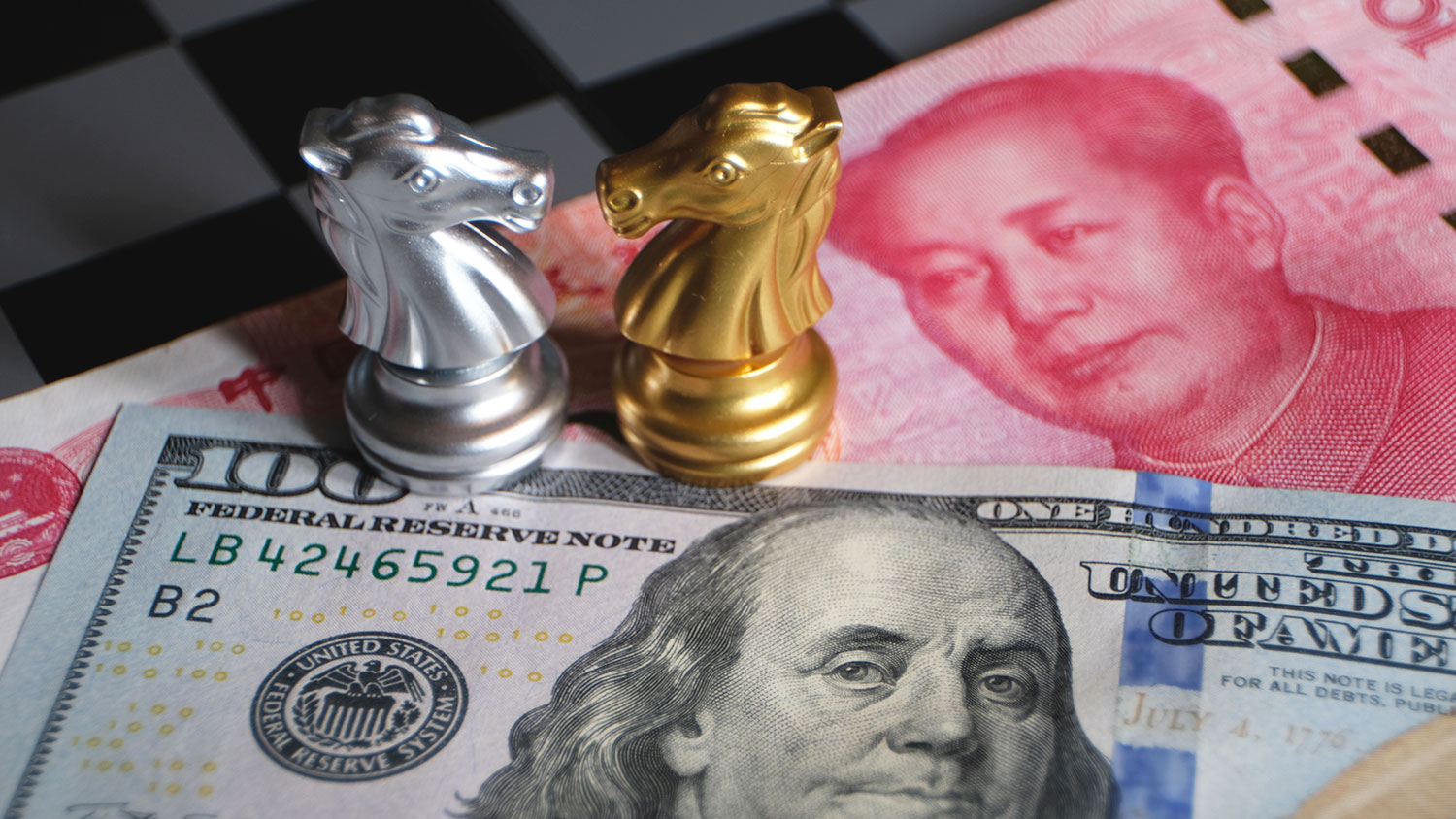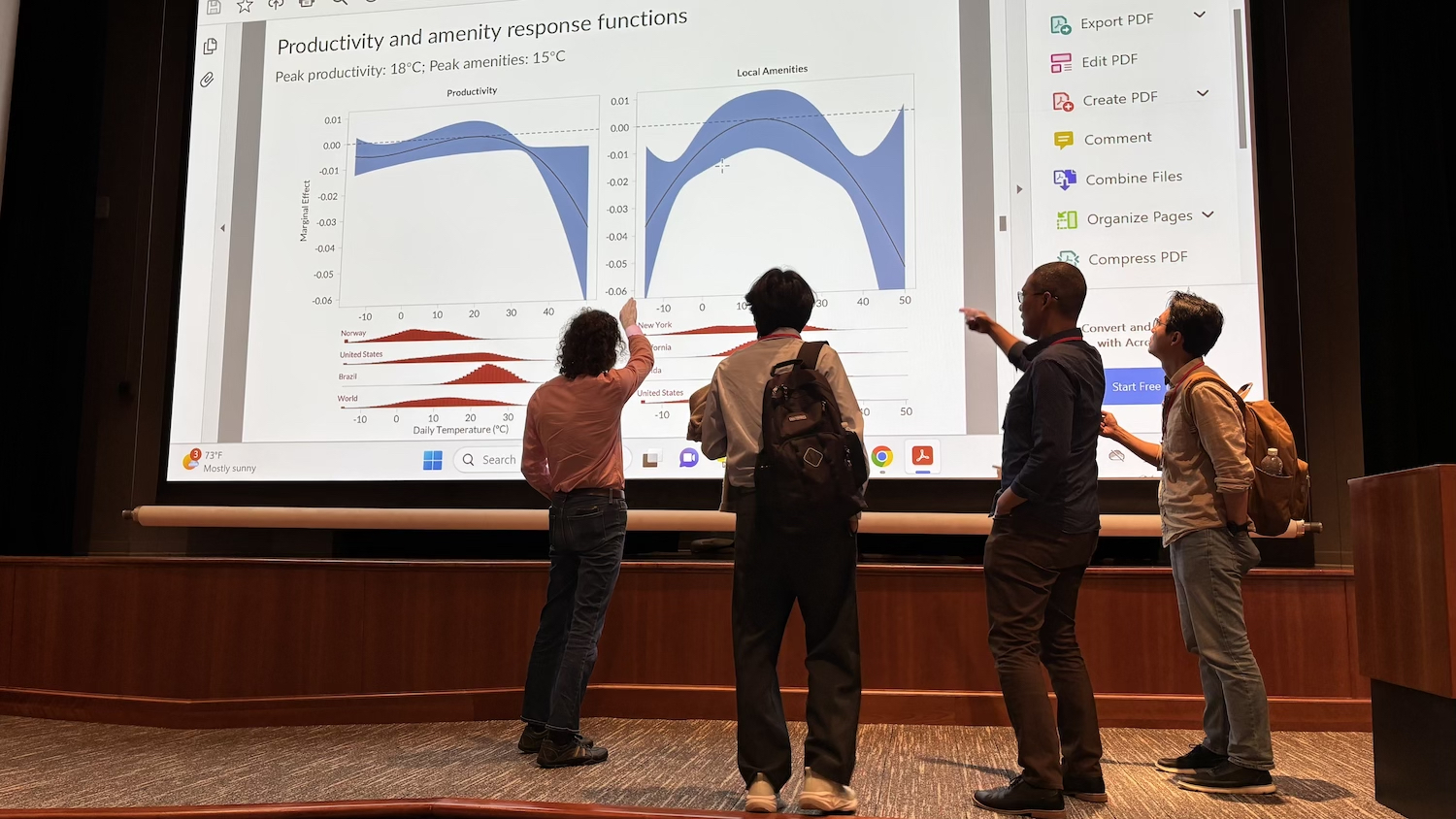The Perils of Breaking Up in an Interdependent World
Poole College's Andrew Greenland and Luca David Opromolla share research presented at the Devils and Wolves International Economics Seminar Series.

The Devils and Wolves seminar series brings world-class research in international economics to the Triangle. These Poole Thought Leadership columns build on the research presented at these seminars to help entrepreneurs, policymakers, and journalists better understand key current trends in the global economy.
In this column, Poole College’s Andrew Greenland, assistant professor of economics, and Luca David Opromolla, Owens Distinguished Professor of International Economics, share research presented at the Feb. 2 seminar.
Concerns about the U.S.-China economic relationship, and how real the prospect of “decoupling” is, has dominated much of the economic press in 2023, and the prospect (real or imagined) of a “decoupling” still looms large at the beginning of 2024.
A new economic model from Steve Redding, the Harold T. Shapiro Professor in Economics at the Economics Department and at the School of Public and International Affairs of Princeton University, unveils the potential economic impact of U.S.-China decoupling.
Changes in trade and investments between the two world’s largest economies are at the center of the debate. But what are the potential economic effects of decoupling?
The 2018-19 trade war has seriously affected the composition of U.S. imports from China. Imports of products subject to trade war tariff rates — such as semiconductors, furniture, IT hardware, some consumer electronics, clothing, and footwear — are significantly lower than their pre-trade war levels (while imports from other countries are significantly higher). At the same time, imports of Chinese products not affected by trade war tariffs have grown so much, just like imports from the rest of the world, that they nearly offset the effects of the 2018-19 tariffs.
Foreign direct investment (FDI) in China is also slowing down. U.S.-China tensions, as well as a harsher Chinese regulatory environment, are contributing to the trend.
“New Chinese data imply that foreign firms operating in China are not only declining to reinvest their earnings but — for the first time ever—they are large net sellers of their existing investments to Chinese companies and repatriating the funds,” wrote Nicholas Lardy of the Peterson Institute for International Economics in a recent blog post.
Changes in the flows of traded goods and services and the flows of investments are related. And they can affect future growth prospects. Evaluating the economic impact of US-China decoupling is a complex exercise.
In a Feb. 2 Devils and Wolves’ seminar, Redding explained how policy and other barriers to the flows of goods and capital shape cross-country patterns of economic growth and income convergence — and how they can determine the economic impact of U.S.-China decoupling.
Redding and his co-authors make two novel contributions to existing scholarship on the topic, allowing for a more realistic understanding of what happens if the U.S. and China continue to disengage economically. Namely, they highlight two obvious but hard-to-quantify features.
First, they emphasize that the characteristics of internationally traded goods, services and investments often depend on the countries that trade them. Capital is imperfectly substitutable. The effectiveness of a dollar invested depends not just on its source — some investors may be less efficient than others at finding good investment opportunities — but also on its destinations. The return the investor gets may depend on the country into which it was invested — for example, it’s easier to enforce contracts in some countries than others. Similarly, the effects of decoupling on the exchange of goods and services will depend on how readily another country can produce a suitable substitute.
Redding and co-authors incorporate these features into a quantitative model that projects the investment and trade impacts of large-scale decoupling on both the U.S. and China.
The model predicts some effects we are already witnessing in the U.S. The trade war has led to rising costs which have been borne by the U.S. consumers and clarifies that the same is likely happening in China. However, because the U.S. is so much more dependent on Chinese goods than the reverse (both as a target of investment and imports of inputs and consumer goods), the negative effects may be worse in the long run for the U.S.
What about re-shoring or friend-shoring? Rising capital barriers in China make investment less attractive to foreign investors, leading to a reallocation toward other countries. That could potentially result in increased domestic U.S. production. However, because those investments in China used to be profitable investments for the U.S., the return on those investments falls, leading to reduced accumulation of wealth in the U.S. and therefore reduced consumption.
Overall, Redding and co-authors’ work portends a substantial shift in the structure of international economic activity — the consequences will impact not only the U.S. and China, but also lead to spillovers in other countries as investors and consumers try to fill the gaps of their former economic partners.
Reallocation of capital to other countries (in the form of FDI) is one cause for that spillover. Another is the emergence of recipient countries as bigger exporters.
The extent to which this occurs will depend on how closely other countries can produce goods the U.S. currently relies on China to produce. While their analysis isn’t expressly focused on this country, we are seeing this kind of shift right now as Mexico has overtaken China as the biggest exporter to the U.S.


